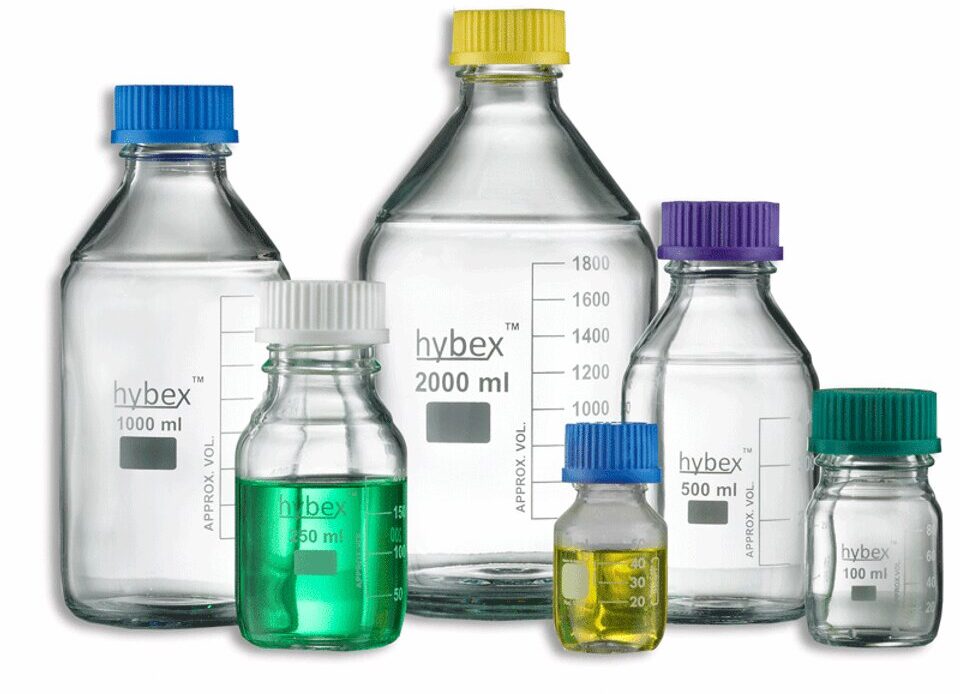In the ever-evolving landscape of biotechnology, cell culture has emerged as a pivotal technique for the production of vaccines and biopharmaceuticals. Cell culture bottles, also known as tissue culture flasks or cell culture flasks, are specialized containers designed for the growth and propagation of cells in a laboratory setting. These bottles provide an environment that mimics the conditions necessary for cell growth and multiplication. At the heart of this process lie cell culture bottles, unassuming yet indispensable tools that play a critical role in ensuring the success of vaccine production and biomanufacturing.
The Role of Cell Culture in Vaccine Production and Biomanufacturing
Vaccines, a cornerstone of public health, have taken center stage in recent times due to the global pandemic. Behind the scenes, cell culture technology has been instrumental in expediting vaccine development and large-scale manufacturing. Cell culture involves the cultivation of cells in a controlled environment that mimics their natural habitat and allows them to proliferate. This technique is employed to produce a wide array of biological products, including therapeutic proteins, enzymes, and, of course, vaccines.
Cell Culture Bottles: The Unsung Heroes
Cell culture bottles may appear modest, but they are pivotal to the entire biomanufacturing process. These specialized containers provide a conducive environment for the growth of cells, ensuring optimal nutrient supply, gas exchange, and waste removal. The design of cell culture bottles has evolved to meet the demanding requirements of modern biotechnology. Made from materials like polycarbonate or polyethylene terephthalate (PET), these bottles offer a sterile and controlled environment that safeguards cell lines from contamination and ensures consistent growth.
Features and Benefits of Modern Cell Culture Bottles
- Sterility: Cell culture is highly sensitive to contamination. Modern cell culture bottles are designed with airtight caps and sterile materials, minimizing the risk of microbial intrusion and preserving the integrity of the cell lines.
- Optimized Design: These bottles come in various sizes and designs, allowing researchers to choose the most suitable vessel for their specific needs. Some designs even incorporate innovative features such as baffles or impeller systems to enhance mixing and aeration.
- Scalability: From small research labs to large-scale biomanufacturing facilities, cell culture bottles are available in a range of volumes. This scalability allows researchers to seamlessly transition from lab-scale experiments to industrial-level production.
- Surface Treatments: The inner surfaces of cell culture bottles can be treated to promote cell adhesion and growth. This is crucial for anchorage-dependent cell lines that require a substrate to attach to during cultivation.
- Transparency: Transparent cell culture bottles facilitate real-time monitoring of cell growth and health without disturbing the environment. This feature is invaluable for tracking the progression of cultures and making timely adjustments if needed.
Impacting the Pharmaceutical Industry
The utilization of cell culture bottles has transformed the landscape of vaccine production and biomanufacturing in profound ways:
- Accelerated Vaccine Development: Cell culture technology expedites the production of vaccines by providing a controlled environment for rapid cell growth and virus propagation. This agility was evident in the swift response to the COVID-19 pandemic, where cell culture played a pivotal role in developing vaccines in record time.
- Consistent Quality: The controlled conditions within cell culture bottles lead to consistent and reproducible cell growth, ensuring the production of vaccines with predictable efficacy and safety profiles.
- Reduced Dependency on Animal Models: Traditional vaccine development often relied on animal models for the propagation of viruses. Cell culture bottles offer an alternative by allowing viruses to replicate within human or animal cell lines, reducing the need for animal testing in some cases.
- Cost-Efficiency: The scalability of cell culture bottles enables the production of larger quantities of vaccines in a single batch, reducing manufacturing costs per unit and making vaccines more accessible.
How to choose the right cell culture bottle?
When it comes to choosing the right cell culture bottle for your vaccine production or biomanufacturing needs, there are several factors to consider. The first consideration is the material of the bottle. Glass and plastic are the two most common options available. Glass bottles offer excellent clarity, allowing for easy visual inspection of cell growth and contamination. They also have low gas permeability, making them suitable for long-term storage. Plastic bottles, on the other hand, are lightweight and shatterproof, offering convenience and safety during handling.
Another important factor to consider is the size of the bottle. Cell culture bottles come in a range of sizes, from small volumes for research purposes to large volumes for industrial-scale production. It’s essential to choose a size that accommodates your specific requirements while considering factors such as incubator space availability and media volume needs.
The closure system is another critical aspect when selecting a cell culture bottle. Screw caps provide a secure seal but may be more time-consuming during manipulations compared to vented caps, which allow gas exchange without fully removing the cap.
Additionally, you should consider if specialized features like baffles or inserts are necessary for enhanced mixing or improved growth conditions.
Always ensure compatibility with your desired sterilization method, whether autoclaving or gamma irradiation, as not all materials can withstand both processes without compromising their integrity. By carefully assessing these considerations—material type, bottle size, closure system features, and sterilization compatibility—you can confidently choose the right cell culture bottle tailored to meet your specific vaccine production or biomanufacturing requirements.
Summary
Cell culture bottles stand as silent heroes in the realm of vaccine production and biomanufacturing. Their unassuming appearance belies their crucial role in cultivating cells, enabling the production of vaccines that safeguard public health. With advanced features, scalable designs, and the ability to provide a controlled environment, these bottles have become indispensable tools in modern biotechnology. As we continue to face global health challenges, the evolution of cell culture bottles will undoubtedly contribute to the rapid development and manufacturing of life-saving vaccines.



